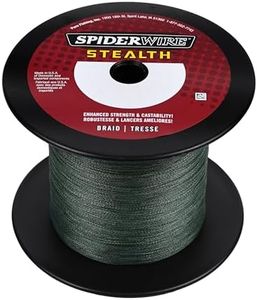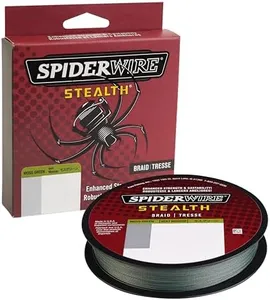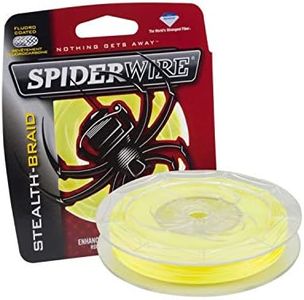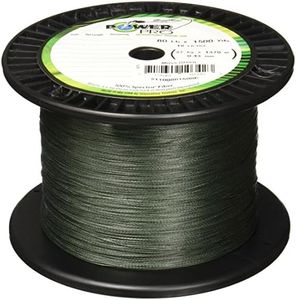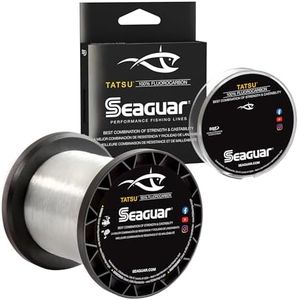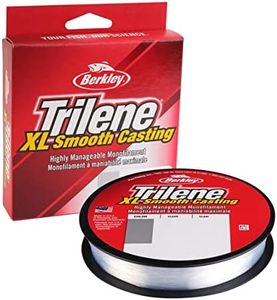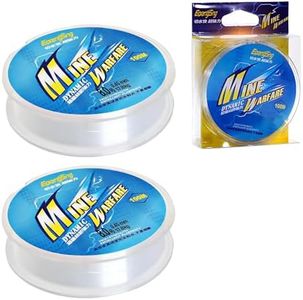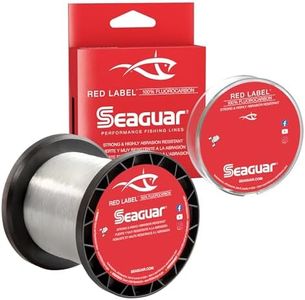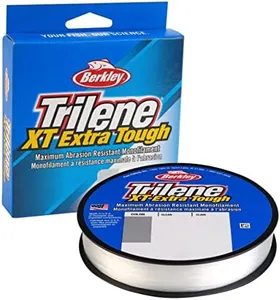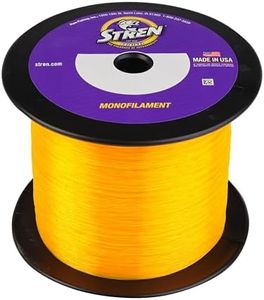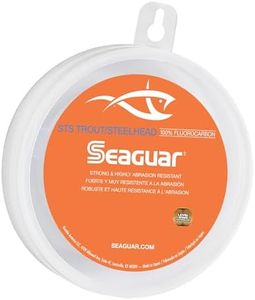We Use CookiesWe use cookies to enhance the security, performance,
functionality and for analytical and promotional activities. By continuing to browse this site you
are agreeing to our privacy policy
10 Best Fishing Line For Crappie
From leading brands and best sellers available on the web.By clicking on a link to a third party's website, log data is shared with that third party.
Buying Guide for the Best Fishing Line For Crappie
Choosing the right fishing line for crappie is important because it can directly affect your chances of a successful catch. Crappie are known for being sensitive biters and have relatively soft mouths, so you'll want to find a line that is strong enough to land the fish but subtle enough not to spook them or rip the hook out. The right line improves your casting, helps you feel the bites better, and is less likely to break during the battle. It's all about matching the characteristics of your fishing environment and your personal style with the right type of line.Line TypeFishing lines come in various types such as monofilament, fluorocarbon, and braided. Monofilament is stretchy and forgiving, making it great for beginners and casual fishing. Fluorocarbon is less visible underwater and more sensitive, making it a good choice for clear water and when you need to feel subtle bites. Braided line is very strong and has almost no stretch, ideal for heavy cover but more visible in the water. Your choice depends on the type of water you’re fishing in (clear vs. murky) and the technique you prefer (light bites vs. heavy cover).
Line Strength (Pound Test)Pound test refers to how much weight the line can handle before breaking. For crappie, which are generally not very large, you'll see lines ranging from 2 to 8 pounds in most cases. Lighter lines (2-4 pound test) give better sensitivity and are less likely to scare fish in clear water, but they can break easier. Heavier lines (6-8 pound test) are stronger and good for fishing in thick weeds or wood where your line may rub against obstacles. Choose lighter lines for open, clear water and when fish are cautious, and heavier lines if you expect to fish near thick cover or potentially catch larger fish.
Line DiameterLine diameter is essentially how thick the fishing line is. Thinner lines are less visible to fish and allow smaller, natural bait movement, which is useful when trying to fool crappie. Thicker lines are stronger and more durable, but might be noticed by the fish or weigh down lightweight lures. If you prioritize stealth and subtle presentation, go for a thinner diameter that matches your needed strength. If you’re dealing with lots of snags or need more durability, choose a slightly thicker line.
Visibility/ColorFishing lines come in various colors and levels of visibility. Clear lines are best for clear water, making it hard for fish to spot the line. Hi-vis lines (bright colors like yellow) help you see the line better above the water, which is great for detecting subtle bites, especially in low light or muddy water. Pick a clear or low-visibility line if fish are easily spooked. Choose a high-visibility line if you're monitoring multiple rods or want to watch for light bites by sight.
Abrasion ResistanceAbrasion resistance is how well a line can handle rubbing against obstacles like rocks, logs, or brush without getting damaged. If you're fishing in waters with lots of debris, underwater plants, or sharp-edged structures, a line with higher abrasion resistance is important to reduce break-offs. If you mostly fish in open water without much cover, then abrasion resistance is less of a concern, and you can focus on sensitivity and invisibility.
